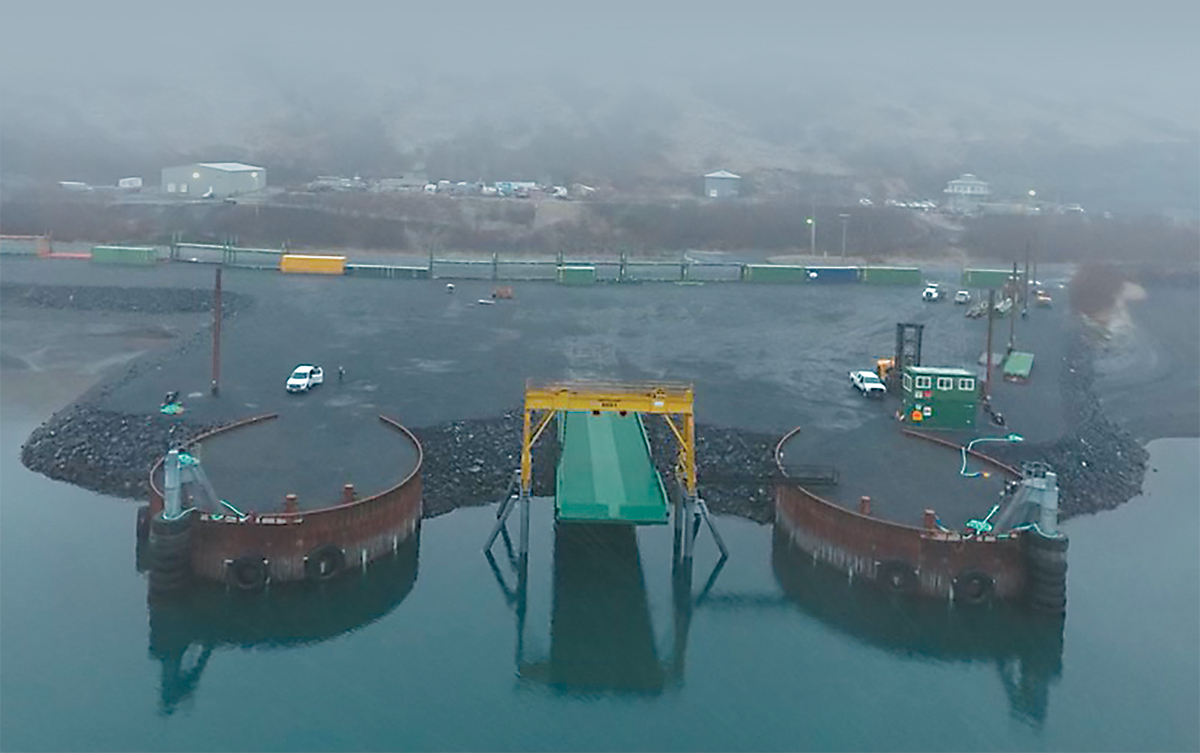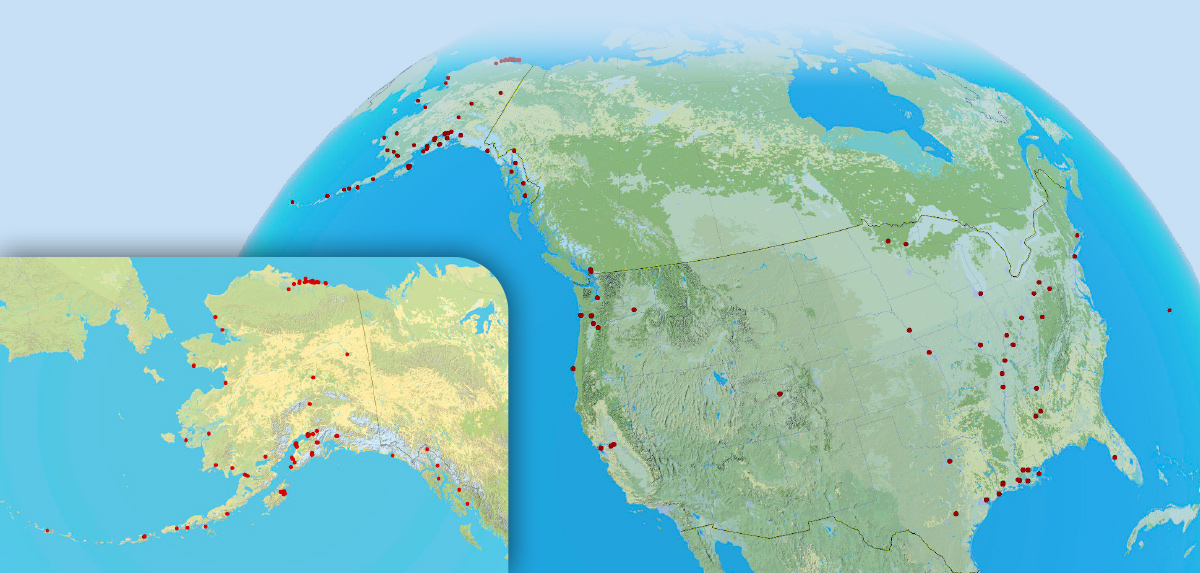
There are good ideas. And then there are multi-million-dollar ideas. PND Engineers, Inc.’s patented OPEN CELL SHEET PILE system, or OCSP, is an example of the latter.
The company has designed more than 200 projects valued at more than half a billion dollars since company co-founder Dennis Nottingham came up with the design and tested it on a pair of temporary bridge abutments built on the North Slope for Atlantic Richfield Company in 1980.
PND President Jim Campbell says contractors like Construction and Rigging, Inc. (now West International Group) and Swalling General Contractors, LLC deserve a lot of credit for agreeing to build the first projects using the OCSP system.
“It was an untried technology,” he says. “Flat sheet piles have been in use for a long time, but PND was the first to use the material in this way. When a private company like that wants to build our design, it really goes to show that it’s a favorable design.”
Swalling has built twenty-seven projects using the technology since its first at Central Creek Bridge on the North Slope in 1984, says Paul Swalling, the third generation of his family to lead the company. Other Swalling OCSP collaborations with PND include the Dillingham All-Tide Dock in Dillingham and the Crowley Fuels Dock in Kotzebue.
The materials and equipment for the Kotzebue dock landed on the first barge of the 2019 season, construction on the fourteen new cells began July 5, and by September 15, the dock was usable, Swalling says.
“We made the last barge out with all the cranes and the material,” he says. “You couldn’t have done that with another system.”
The patented and born-in-Alaska system has been used on international projects from the West Indies to Iraq.
“The design revitalized the flat sheet market,” Swalling says.
Nottingham—who founded the company in 1979 with partner Roy Peratrovich Jr. and later added Brent Drage—was born to bootstrap problem solving. His engineering license only expanded the toolbox he’d been assembling since he was a Montana farm boy.
During his thirty years as PND president, he says he tried to hire people who took similar satisfaction from problem solving.
“You get a little background in college. And then you get an education after that,” says Nottingham from Montana, where he now makes his home.
He was a young engineer working at the Department of Transportation when the 1964 earthquake caused more than $300 million in damage to the state’s infrastructure. About the time those repair projects were completed, he says he set to work designing Trans Alaska Pipeline System projects.
He used lessons learned from the earthquake wreckage to redesign Alaska’s damaged bridges to withstand similar seismic events.
“It was an opportunity for someone who liked doing that kind of stuff,” he says.

“Alaska was unique; they would let you innovate.”
When his university training didn’t anticipate Alaska’s extremes—seismic events, cold weather, permafrost, high winds, waterfront construction, short construction seasons in remote locations—Nottingham says he reached into his bailing-wire toolkit to design solutions.
Sometimes people don’t believe him when he tells them he designed more than 300 bridges during his nearly fifty-year career in Alaska.
Nottingham was in his early thirties when he designed a pair of pioneering bridges that remain integral to the daily operation of the Trans Alaska Pipeline System—the E.L. Patton Yukon River Bridge and Gulkana River Bridge.

“I have a lot of respect for skilled tradesman,” he says. “You have to listen to their ideas. The secret to a lot of this is those construction guys. I credit those guys with a lot of the success we had.”
But seismic activity—that’s the real test of how well the OCSP designs work, Campbell says.
The Aleutian Islands are well known for their high wind events, but it’s the seismic activity that was the bigger challenge designing OCSP docks in Dutch Harbor and Chignik Bay.
“It’s just constant shaking,” Campbell says.
After big seismic events, he says contractors inspected the Dutch Harbor and Chignik docks and everything was fine.

Over the years that OCSP has been implemented, it’s saved project owners more than $150 million in construction costs over other designs. For contractors and owners, the big savings come from being able to work the project from land, instead of from a barge, Swalling says.
Illustration courtesy of PND Engineers, Inc.

Some of the design’s other strengths:
- Cost efficiencies are amplified in challenging construction environments, such as severe ice, soft soils, deep water, scour, and seismic events.
- Accommodates uniform loads of 10,000 pounds per square foot and concentrated module loads of 6,000 tons.
- Capacity can be increased by extending tail walls, even after construction is complete.
- Effective in locations that are susceptible to severe ice, scour, and seismic events.
So it’s no wonder that the patented innovation has received more than thirty awards, including AGC of America’s Aon Build America Award in 2010 for best new international construction project and a prestigious NOVA Award from the Construction Innovation Forum in 1998.